
Candida Martinelli's Italophile Site

Main
Page This family-friendly site celebrates Italian culture for the enjoyment of children and
adults. Site-Overview
This charming tribute to Enrico Caruso features his singing 'La donna e'
mobile', and images
from a book about the man. (Sometimes the arrow needs two clicks
to start the video.) New York's Metropolitan Opera House Havana Cuba's Opera House 'Amor ti vieta' by Mario Lanza's version
(later on this page, you can listen to Gigli's version). You can
hear that both men are true tenors, something that is not always true of
men singing as tenors today. Mario Lanza portrayed a sanitized Caruso in the 1951 film, 'The Great
Caruso'. Here's a clip with his performance of 'Because'. Special for Mario Lanza fans, a singer who's life was far too brief,
here is his recording of Shubert's 'Ave Maria'. Here's a clip of Gigli from 1936 singing 'Tu sei la vita mia'.
At the end of the clip, you can hear Gigli's speaking voice, which is as
it a true tenor's should be, a tenor. Maria Callas singing Puccini's
'O babbino caro', best known from the film 'A Room With A View'.
MP3 file. Click to start in your Media Player. (The title
appears wrong, but the song is right.) Pietro Mascagni's evocative
musical Intermezzo from his opera 'Cavalleria Rusticana'. MP3
file. Click to start in your Media Player. (The title appears
wrong, but the piece is right.)
Il Divo, a sort of classical barber-shop quartet, singing, in
Spanish, Toni Braxton's hit, 'Come Back to Me' or 'Regresami'.
Visit my Italian Renaissance Gardens
Page
More about Italian
Opera at Wikipedia ...Classical music and folk music reigned supreme. The
former was seen as the epitome of talent, training and technique, the
latter as a tie to the past and a populist expression in the present. These were also the days before electricity and microphones,
so the vocal star of big spectacles needed a voice that could carry
to the backs of theatres, tents, and crowds in city squares, and that
meant classically trained operatic singers. Interior of La Scala Opera House in Milan Folk performers stuck to the more intimate local venues like
pubs, restaurants and club halls. And it's not like the two forms never mixed... Days, sometimes hours, after the debut of a new opera,
more earthy versions of the arias were performed by folk singers
throughout the city. Even today, I'm sure more Italian men can sing that
version of La Donna č Mobile than can sing the legitimate
version! The Interior of Paris's Opera House The stars of this era were charismatic, larger-than-life
figures who managed to project their personalities and talent
without the aide of today's global media. Three of the biggest Italian singers of the era were: They traveled extensively, performing throughout Europe (Moscow,
Paris, Milan, London...), Latin
America (Buenos Aires, Mexico City...) and North America (N.Y., San
Francisco, Chicago, Boston...), adapting their performances to the local
tastes and languages. They had ambition, talent and most
importantly, stamina. Arriving at Paris's Opera House Enrico Caruso (1873-1921) is the gold-standard of operatic tenors.
No singer, living or past, has claimed to match his vocal versatility
from lyric lightness to dramatic weight, and no
critic of opera singers expects another singer to ever come
close. He also enjoyed a vocal range that stunned people, and amused him.
When a base (basso) took ill during a performance in which Caruso was
singing the tenor lead, Caruso sang the man's aria as the ill man
mouthed the words, and the audience never knew the difference. He claimed that an opera singer needed a big chest, a great
memory and stamina. He also stressed the need for heart,
or emotion, to communicate the drama of opera all the way to the back
rows. This was something new to opera, that up to then was highly
stylized, with the singers standing still as they sang, as if giving a
concert in costume. And the star of the show was the prima donna,
not the often effete male tenor. Caruso's masculine style added a sexual tension to the
stories of romantic woe. What Caruso had, more than his talent, was personality.
He grew up as a poor child in Naples who's mother and later his
step-mother insisted he develop his natural talent for singing.
To survive on the rough, crime-ridden streets of the slums where he
lived, the budding singer needed charm by the bucketsful. Gigli later lamented that he didn't have the same deprived
background. If he'd had, he could have developed the same expansive, warm,
humorous personality that Caruso used to charm his audiences even
before he wowed them with his singing. His life was full of dichotomies, further humanizing the
star. He was self-indulgent and generous; unfaithful and loyal;
sinful and religious; nouveau riches and earthy, superstitious and
practical. The media of
the day loved him as much as the audiences did. (Click here if you'd like to read an entertaining and interesting account
in Caruso's own words, from
Britain's The Sketch magazine, of his experiences during the 1906
earthquake and fire in San Francisco, the day after a performance
of Carmen at the no-longer-existing Mission Opera House.) Caruso began recording early in his career, and the
record business grew with his fame, each adding to each other's global
reach. Because of this, there are many recordings of Caruso's
singing, and most are out of copyright. You can listen to some Caruso recordings at my
YouTube Channel. You can download for free all of Caruso's recordings from
the Internet Archive as MP3 files. Free
MP3 files of Complete Caruso Part 1 Free
MP3 files of Complete Caruso Part 2 If you want to listen to samples of the pieces, Amazon.com
lets you listen to one minute of each song. To read more about Enrico Caruso, here are books from Amazon
(the biography by his son is supposed to be the best), and two websites
of interest. Caruso and Tetrazzini: Art of Singing The
Enrico Caruso Museum of America And if you want to purchase CDs, here is Amazon's selection. Opera Patrons in Paris's Opera House showing opera was more a
social event than a musical event Gigli (1890-1957) had large shoes to fill and he never quite managed to fill
them. His singing talent was more limited than Caruso's and less
versatile. But his voice was beautiful and expressive,
and versatile enough to sing bel canto and heavy dramatic roles. (Is it only me, or does the Italian-American actor Peter DeLouise,
son of Dom DeLouise, look an awful lot like Gigli? When they
make that bio-pic...) When Caruso died young, Gigli's career took off, and he was
often called 'Caruso secondo', which was meant as a
compliment. A sign of the man's character is that he would often
reply that he preferred to be called 'Gigli primo'. There was also a darkness and rigidity in his character than led
him to embrace Fascism and Mussolini, hurting his career and limiting
his international appeal during and right after WWII. But
his concert tours and recordings picked up after the war and
continued almost to his death. Here are two Gigli recordings you can listen to with the
Windows Media Player or the Real One Player. (These are from my
site.) La donna č mobile from Rigoletto by
Verdi Amor ti vieta from Fedora by Giordano You'll notice the emotionality of the singing, which I've heard in
Pavarotti's singing, but only when he sings for an Italian
audience. It's much to the Italian taste, and reminds people of
Gigli, Pavarotti's idol. If you want to listen to samples of Gigli singing,
Amazon.com lets you listen to one minute of each song. To read more about Gigli, or to buy his CDs here's some
Amazon selections, and a website of interest. Gigli's Autobiography at Amazon Louisa Tetrazzini (1871-1940) was the quintessential opera diva: childlike,
self-indulgent, demanding, emotional, larger-than-life, full of talent
and charm, a full-figured woman, and, inevitably, loveable. She was what's called a coloratura soprano, which means her forte
was in the showy, and technically difficult, runs, trills and vocal
colorings of the music, especially in the higher ranges. In fact, Tetrazzini was known to have a weak low range, but her
high range was so light, airy, perfect in tone and pitch, and
technically stunning that no one really cared about her low range. She was famously full-figured, and loved to eat. And
just like Pavarotti, chefs in restaurants she frequented would often
make dishes just for her. That's how the famous dish Chicken
Tetrazzini came to be. There is an odd story about Louisa going out for a big meal
with Enrico Caruso (another big eater) before having to sing the lead
in a opera opposite the tenor John Sullivan. Her stomach was so enlarged from the meal, she couldn't fit into
her corset, so she was, in Sullivan's less than gentlemanly words, rubbery
'like two Michelin tires' as he tried to pull her to him during a
romantic scene. They both started giggling and could barely stop laughing
long enough to sing their parts. Like her male colleagues, Louisa Tetrazzini traveled the world
performing in opera houses, concert halls, recording studios, and even
city squares. In 1910 she famously sang for a crowd of thousands in San
Francisco around a famous downtown landmark, Lotta's Fountain,
bringing encouragement to a town still rebuilding after the
devastating earthquake and fire of 1906. The landmark was one of
the few that remained after the devastation, so it had symbolic
meaning for the locals. You can visit my
YouTube Channel to listen to some recordings of Tetrazzini
singing and talking. If you'd like to listen to Louisa sing, you can download this MP3 file for free from the Cantabile
Subito Site: Una
voce poco fa
from Il Barbiere di Seviglia by Rossini If you want to listen to samples of Tetrazzini singing,
Amazon.com lets you listen to one minute of each song. To read more about Tetrazzini or to buy her CDs here are
some Amazon selections, and a website of interest. Caruso and Tetrazzini: Art of Singing Tetrazzini Biography at Amazon Tetrazzini
on the Cantabile Subito Site Adelina Patti (b1843-d.1919) was the opera soprano star for the
second half of the 1800s. She was born in Madrid of Italian
parents. She named Tetrazzini as her operatic successor. Visit this website to learn more about Adelina Patti,
President and Mrs. Lincoln's favorite singer. Adelina
Patti at Opera Singer UK You can listen to samples of Adelina Patti singing on
Amazon.com. She has a beautiful voice, delicate and lyrical.
There are also some versions of 1905-6 recordings around that were made after
Patti's retirement, and with the primitive recording materials of
the day, which do not always do justice to this star's sweet voice. Amazon.com lets your hear one minute of each song on
this album which includes some re-mastered songs by Patti.
Visit my
YouTube Channel to view 5 clips that tell Patti's story, including
some of her singing, her auto-biography, and comments by her
contemporaries. It is a radio program about the great singer, that
pays a worthy tribute to the singer who sang for 40 years throughout the
world to enthralled audiences. A mixed genre of pop music and classical singing
style is very popular these days. Andrea Bocelli and
Alessandro Safina come to mind, as does the "boy-band"
Il Divo.
And you can sample some of their songs at
Amazon.com. Nowadays, it's more common to purchase the DVD
of a concert or television special than the CD, but some offer both
together, so shop carefully. To search for singers, operas, composers, books, DVDs, CD... at
Amazon.com just use this search engine. The author of the first book link is an interesting book
recommended by a site visitor. The book presents the real history
behind the play and opera Tosca.
This is an Amazon.com slideshow of opera on DVD.
Move your cursor over an image to get product info. Click on
an image to go to Amazon for more info and product reviews.

Enrico
Caruso, Beniamino Gigli, Louisa Tetrazzini, and Adelina Patti
![]()
![]()
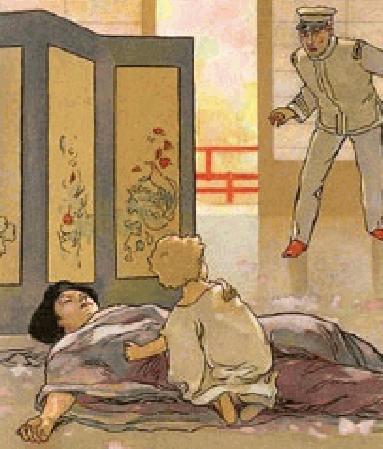
In the Days Before Pop
Music...
The Italian Stars of the
Era
Enrico Caruso


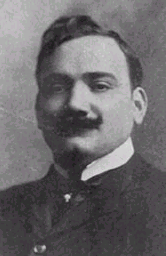

Beniamino Gigli
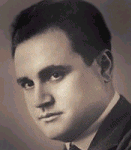
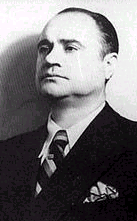
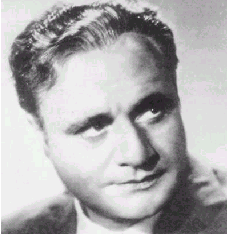
Louisa Tetrazzini
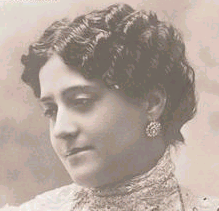
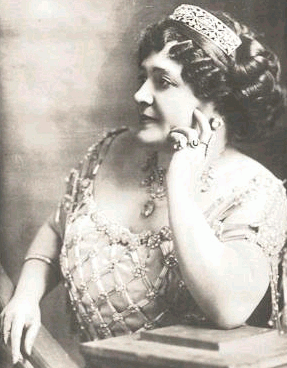
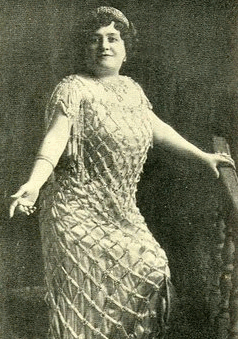
Adelina Patti
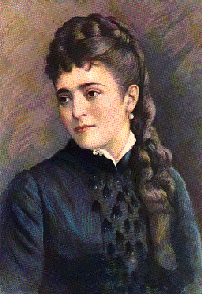
Classical Pop

